If network architectures are considered the backbones of the modern business’ workflow processes, then servers can be thought of as being the brains of the IT operations
Οne of the best ways of maintaining the health of this brain is with the help of the server patch management tools that we will soon be looking into.
Here is our list of the seven best Server Patch Management tools:
- SolarWinds Patch Manager (FREE TRIAL) An easy-to-use yet powerful cloud or on-premises server patch management tool from a leader in the market for numerous operating systems and applications; it comes with in-house technology to make the patching experience smooth and successful.
- ManageEngine Patch Manager Plus This tool supports an extensive array of patches for over 500 third-party applications and comes in on-premises and cloud versions; administrators can deploy pre-tested patches to all devices – both physical and virtual – that are all monitored from insightful dashboards.
- NinjaRMM A tool for IT professionals that can reach devices anywhere they are. It gives complete control over any device running Windows, Linux, and macOS and over 135 commonly used applications; minimal end-user intervention is required.
- Atera Cloud-based patch management software – full of administration tools and allows administrators to customize their patches or exclude software; it can integrate with third-party tools to cover Windows and Mac devices.
- TOPIA Αn affordable patch management tool that protects assets in real-time and can respond to triggers set by administrators; it is lightweight and non-resource intensive and yet powerful enough to secure servers, workstations, operating systems, and applications.
- Syxsense Manage Αn endpoint management and patching tool that covers all devices, including virtual servers; it supports patching both Windows and Linux operating systems and keeps track of devices that allow for quicker response times.
- PDQ Deploy Αpart from patch management, it can deploy scripts and make configurations with ease and accuracy; it has many ready-to-deploy third-party applications and can send out multiple silent deployments without affecting endpoint user experiences (UX).
Ok, so what is server patching?
Server patching or patching a server updates a server’s software to fix errors, update versions, or improve features and performances. The fixing of errors also involves handling security vulnerabilities and ironing out bugs that could pose a risk to a business’s data and information.
And so, we can say that there are five main reasons for server patching:
- To address a specific bug or flaw in the core processing code.
- To improve a server operating system’s – or any of its application’s – stability, features, and functionalities.
- The software and operating system makers release patches and updates whenever vulnerabilities are detected; these should be installed quickly.
- To remove bloatware – unneeded code and applications – to streamline and optimize core operating system components’ size and resource consumptions.
- To enhance existing patching processes – perhaps Windows Server Update Services (WSUS) isn’t delivering or performing as expected; maybe, it isn’t working at all. A third-party patch management tool can take over the job or even out-perform such native patching services.
Adding all these points together, we can see that securing servers with the latest patches should be a critical part of any business’s cybersecurity protocols. Ignoring this process could pose a security threat to mission-critical servers, workstations, applications, and other network assets.
What is patch management?
Patch management oversees the distribution and application of updates to server operating systems and application software solutions.
System and network administrators use patch management tools, some of which we will see, to perform these tasks.
How to choose the best server patch management tools
For a patch management tool to be considered as being the best on the market, it needs to meet several criteria, including:
- Ease of use – working with server patch management tools should be effortless; minimal effort should be put into its installation, management, and troubleshooting.
- Multiple operating systems support – it should cover more than one version of any, or all, of the major operating systems like Windows, macOS, and Linux.
- The ability to deploy to the whole network should reach servers on-premises, on a WAN, in the cloud, or a hybrid combination of all three architectures.
- High integration – a good tool will integrate well with the current hardware and software environments with ease and without creating conflicts, bottlenecks, or crashes.
- Non-stop scanning – the time between a vulnerability occurring and patched should be minimal; therefore, the tool should continuously monitor the network to spot vulnerabilities as early as possible.
- Quick identification, proper patching – once a vulnerability has been detected, it is up to the server patch management tool to quickly find the correct and latest version of the remedial patch.
- Tiny footprint – the patching process shouldn’t hog bandwidth, storage space, or any other resources; on the contrary, it should be unobtrusive and appear seamless to any user on the network.
- Detailed reports – the tool should have insightful, thorough, and comprehensive information that shows statuses of patches, deployments, and issues or warnings; it helps to have reports stored for later reference and audits or shared among stakeholders for a collaborative understanding board.
And so, we, too have tested and compared solutions to come up with the seven best server patch management tools on our list.
The seven Best Server Patch Management Tools
Let us delve straight in and have a look at the seven best server patch management tools:
1. SolarWinds Patch Manager (FREE TRIAL)
This is a server patch management tool from SolarWinds, one of the leading server and network management and monitoring tools. It is available in both cloud and on-premises versions.
SolarWinds Patch Manager offers a comprehensive list of updates for operating systems as well as numerous business applications. These updates are categorized as critical, security, definition, third-party updates, and service packs and cover multiple software solutions common in most business environments.
Some more features include:
- Patch Manager is the perfect tool for extending Microsoft WSUS and Microsoft Endpoint Configuration Manager (MECM) capabilities for updating third-party applications.
- Its PackageBoot technology helps smooth out application patch management. It creates the right pre-and post-installation environment for successful patching; it then controls the deployment itself, thus reducing security risks. This helps in clearing the path for the most complex installation scenarios and which, in turn, curbs patching processes from failing.
- It comes with reports that give insights into vulnerabilities – straight out of the box; administrators can leverage dashboards and manage exposures from a central location starting from the minute installation is over.
- And soon after, they can also start monitoring the status of ongoing patches and quickly spot any unsuccessful patch installations, which can then be handled accordingly.
- Next, they can go on to control when and where updates are performed with advanced scheduling features.
- Looking at more distinct tasks, administrators can discover systems that run versions of Java with known vulnerabilities; this offers excellent help because, even if they could somehow manually track all Java applications and then patch them, there’s still a chance for employees to fail that could leave desktops and servers vulnerable to attacks. With this tool, nothing is left to chance.
- Similarly, administrators can start by viewing device statuses to find vulnerabilities in their domains or platforms. Then, with the help of Patch Manager, they have the luxury of deploying pre-tested patches to implement security solutions quickly.
- The tool’s web UI displays important patch data, alongside other SolarWinds products’ data, to create a standard, integrated console; among other things, administrators can view the latest available patches, the top ten missing patches, and the general health overview of an environment based on the patches that have been applied on them.
You can test SolarWinds Patch Manager with a fully functional 30-day free trial.
2. ManageEngine Patch Manager Plus
Patch Manager Plus is another tool from a leader in the software and server monitoring and management software market. It is used for automated patch deployments for Windows, macOS, and Linux operating systems.
It offers patching support of over 900 updates for over 500 third-party applications and is available as both on-premises and cloud versions.
Looking at more features, we get:
- It can scan endpoints to detect missing patches, test patches pre-deployment, automate the deployment process, and then report on the results and current status.
- This way, the tool mitigates deployment risks to operating systems and third-party applications. Finally, it gives in-depth insights via reports and dashboards that can also be used as references for audits and proof of compliance.
- Patch deployment can be done seamlessly – from a single interface – and across desktops, laptops, servers, roaming devices, and virtual machines.
- The tool makes it easy to view complete details of patches relevant to a network; a patch overview also shows those installed or missing on the platform, which helps administrators see the current overall compliance and security status.
- They can see how many systems are missing patches – by patch count and severity – on the whole network.
- Meanwhile, the systems view shows the health status (which is calculated based on patch severity and the number of missing patches) of systems in the environment and concerning the system health policy; they are rated “healthy,” “vulnerable” or “highly vulnerable” accordingly.
- Administrators can further narrow their data search using filters that help to analyze multiple tables, view patch statuses or compliance data in various combination and comparison reports.
- They can keep track of the progress of patch deployments and reboots to see if the patch application process has been done in an effective manner.
- Then, the patch summary dashboard is browser-based, interactive, and can be accessed from anywhere and at any time.
- Automated vulnerability assessment and patch deployments ensure systems’ compliance with the latest version of installed, licensed software; automatic email alerts support this in case of new updates, missing patches, or failed deployments.
Try ManageEngine Patch Manager Plus – cloud or on-premises – for FREE.
3. NinjaRMM
NinjaRMM is a quick, efficient tool for IT professionals looking for solutions that will help address user issues by securing their devices. It also offers a cloud-native patching solution that makes it easy to patch devices anywhere in the world – all that is needed is an Internet connection.
But, there’s more:
- A higher rate of patch compliance – and user experience – can be achieved with this tool simply because endpoints don’t have to be on a domain (or use a VPN) for the patching process; they just need to be online.
- It is cost-effective because there is no need for patching servers – which could be expensive to set up, run, and administer.
- NinjaRMM is the ideal tool for complex network architectures as it offers cross-platform patch management for Windows, macOS, and Linux operating systems; this is further enhanced with patch policies that optimize and automate patching processes at scale, as well as ad-hoc management that makes it quick and easy to deploy sudden critical updates.
- It facilitates patching by giving complete control over the process using patch identification, approval, and deployment schedules.
- Administrators also have complete visibility and control over applications on the endpoints – even when they are offline, they can patch over 135 such typical applications without the need for users’ input or intervention.
- Apart from deployment and patching, administrators can use a catalog of applications to remove or blacklist applications they may deem unnecessary or pose security risks.
- Everything is done from one central console – whether it is insights into health, vulnerabilities, or patch management reports – and there is no need for infrastructures or costly overheads.
Try NinjaRMM for FREE.
4. Atera
Atera Patch Management Software is a cloud-based server patch management software. It is a powerful integrated solution for IT departments and administrators alike. It is chock-full of features like Remote Monitoring and Management (RMM), Professional Services Automation (PSA), billing, helpdesk, and ticketing services, as well as patch management.
The tool automates the critical patch management process and uses a remote agent to track vulnerabilities that may occur in endpoints.
There’s more:
- This tool gives complete control over the patching of operating systems, software, and hardware from a central location – the cloud.
- Apart from automation, it can be used to plan and schedule tasks for single or collections of applications – like installing Java updates; it can create custom configurations for Microsoft updates and unique automation for each endpoint user.
- Administrators can add custom patches to IT automation profiles or create software bundles to install or update at scale for each customer. Alternatively, they can exclude specific software from the patches to meet unique requirements.
- They can set and automate patching for Windows and macOS devices using third-party integrations like Chocolatey for Windows and Homebrew for Mac devices.
- The tool’s powerful reporting helps administrators stay on top of all patches, deployments, vulnerabilities, and every agent at all times, ensuring complete control and airtight security; they can share these insightful reports with their clients or other stakeholders.
- Atera has a Shared Script Library – driven by the managed service provider (MSP) community – with hundreds of scripts that can be cloned, customized, and automatically added to IT automation profiles; these scripts are all tested by the in-house team and tuned to enhance the patch management process.
Try Atera for FREE – and fully functional for 30 days.
5. TOPIA
TOPIA is a comprehensive, cloud-based vulnerability management tool. It can take care of a catalog of servers, workstations, operating systems, and applications – without breaking the bank.
Looking at its features:
- It protects assets in real-time, and its rich, integrated features quickly pinpoint and remediate the most significant risks to infrastructure with the help of efficient automation features and precise contextual analysis capabilities.
- Administrators can test and deploy patches manually; alternatively, they can fully automate the process and patch en masse or run the patching process when events cause triggers to fire.
- This patch management tool allows administrators to select specific endpoints or applications or respond to specific triggers and at any scale.
- Servers and virtual machines alike are protected from downtime and loss of bandwidth during patching, thanks to this patch management system being lightweight with a small digital footprint.
- And then there is the fact that TOPIA can be used to schedule the patch deployments to be sent out during off-hours or planned downtimes – no man-hour is wasted during patch deployments.
- Accurate, rich, and detailed reports can be extracted using the events and actions that the tool keeps track of. It deploys and manages patches across the network; these reports can be used as audit reports to gauge the overall patch management process.
Try TOPIA FREE for 30 days.
6. Syxsense Manage
Syxsense Manage is an endpoint management solution that can manage all assets inside and outside a network with coverage for all major operating systems and platforms – including Internet of Things (IoT) devices.
Of course, Syxsense Manage is also a tool for patch management. It allows all aspects of the patching process to be easily organized and executed.
Delving further, we find:
- A single agent and a cloud-based platform make it easy to install and start using Syxsense Manage and make it a light and non-intrusive tool as it goes about managing and monitoring endpoints.
- Endpoint servers that can be monitored include physical and virtual ones located on-premises or in the cloud and running various versions or flavors of Windows and Linux operating systems.
- The tool keeps an eye on endpoints to ensure all patches are up-to-par and that no security standards have been compromised; assets covered include operating systems, hardware, and software.
- Once scans show that there are indeed vulnerabilities, the tool prioritizes the patching process based on the threat posed by the discovered security risk; it even shows exploited vulnerabilities.
- Syxsense Manage is a versatile tool – administrators can, for example, track patching and updates for third-party software like Java or deploy Windows 10 Feature Updates; they can then see all Windows 10 versions on a single dashboard.
- It has a wide array of reports, including “Security Risk Assessment” to show the overall health of the network or the “Most Vulnerable Devices” report, which shows the endpoints that need to be patched immediately; these reports can be shared or exported and used as proof compliance to security guidelines like HIPAA.
- The tool also enhances network security by monitoring authorization issues, policy implementations, and the status of antiviruses; furthermore, it can spot misconfigurations in operating systems and compliance violations to make sure a more comprehensive security perimeter buffers the patching process.
- Traffic congestion or network bottlenecks are kept to the minimum by skipping the need for approvals thanks to Syxsense’s built-in detection logic that allows only required updates to be deployed; filters can also be applied to deploy updates that share a common value dynamically.
- Even post-patching rebooting of endpoints is tackled with care – devices that need rebooting can be specifically targeted; interaction with users can be done via custom messages and during specific times.
Try Syxsense Manage FREE for 14 days.
7. PDQ Deploy
PDQ Deploy is a software deployment tool created to update third-party software solutions, deploy scripts or make system configurations quickly and accurately. It can also be used to help automate patch management campaigns.
This tool enhances the patch deployment and management process with added capabilities to deploy multiple application patches, execute custom scripts, and remotely execute Windows system commands.
There’s more:
- PDQ Deploy performs even more tasks on top of Windows patch management or software deployment – it can be used to copy files, send notification alerts to users logged on, and even force reboots in case of endpoint users’ reluctance to do so.
- It has a Package Library of over 250 ready-to-deploy, popular third-party applications to choose from, including Adobe Reader DC or even Microsoft Cumulative Updates; these applications are tested for bugs, kept up-to-date, and made accessible at all times.
- The tools also make it easy to keep all Windows systems up-to-date with multiple silent deployments to numerous devices; schedules can be set for the updates to be pushed at certain times; it doesn’t matter if the endpoints are offline – the download commences as soon as the device comes back online.
- Administrators can collaborate on deployment and patching processes. The tool comes with multi-admin access and even a shared database; they can get notifications sent to them when successful deployments are completed.
Try PDQ Deploy FREE for 14 days.
We would like to hear your thoughts on our choices for the seven best server patch management tools. Leave us a comment below.
L’article The 7 Best Server Patch Management Tools for 2021 est apparu en premier sur Comparitech.

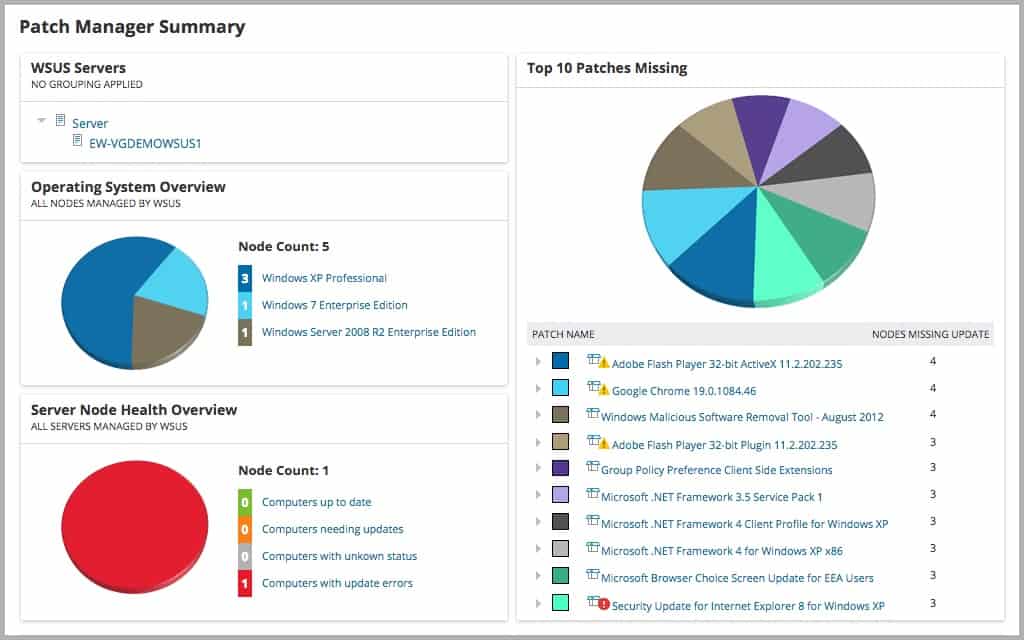
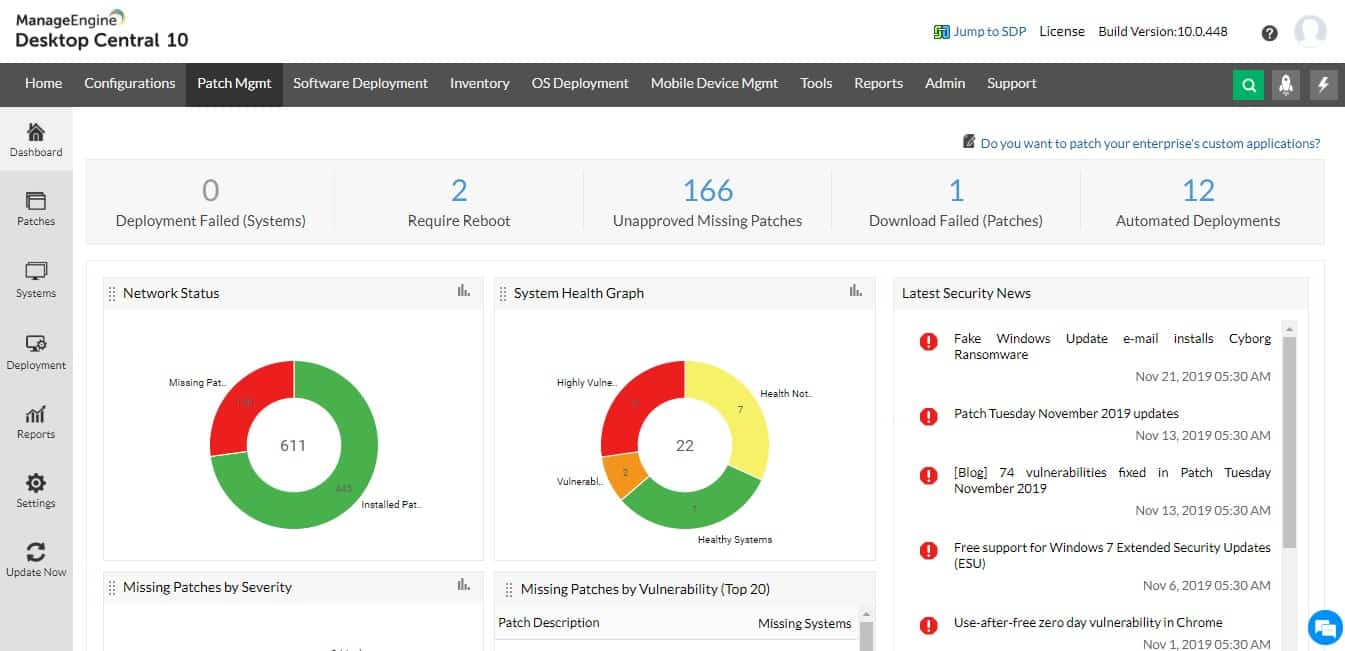
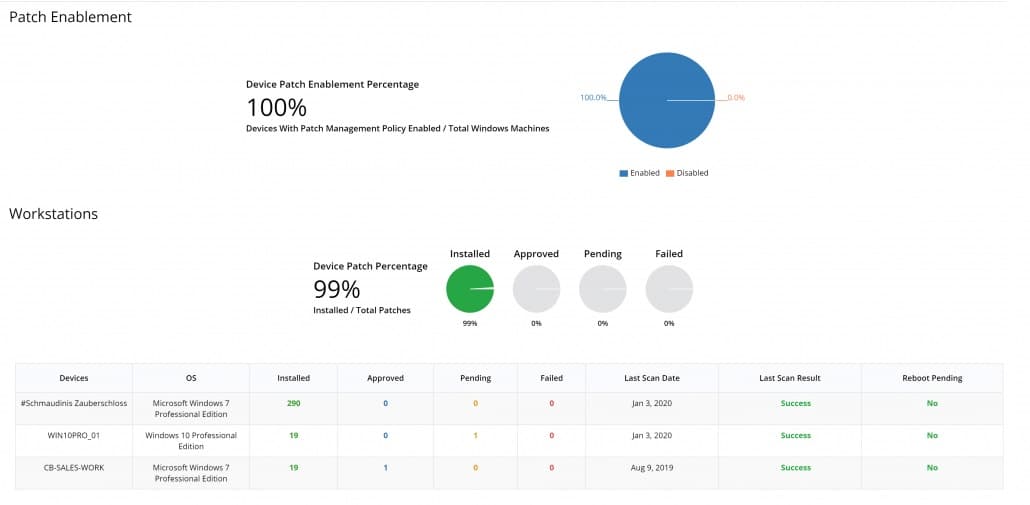

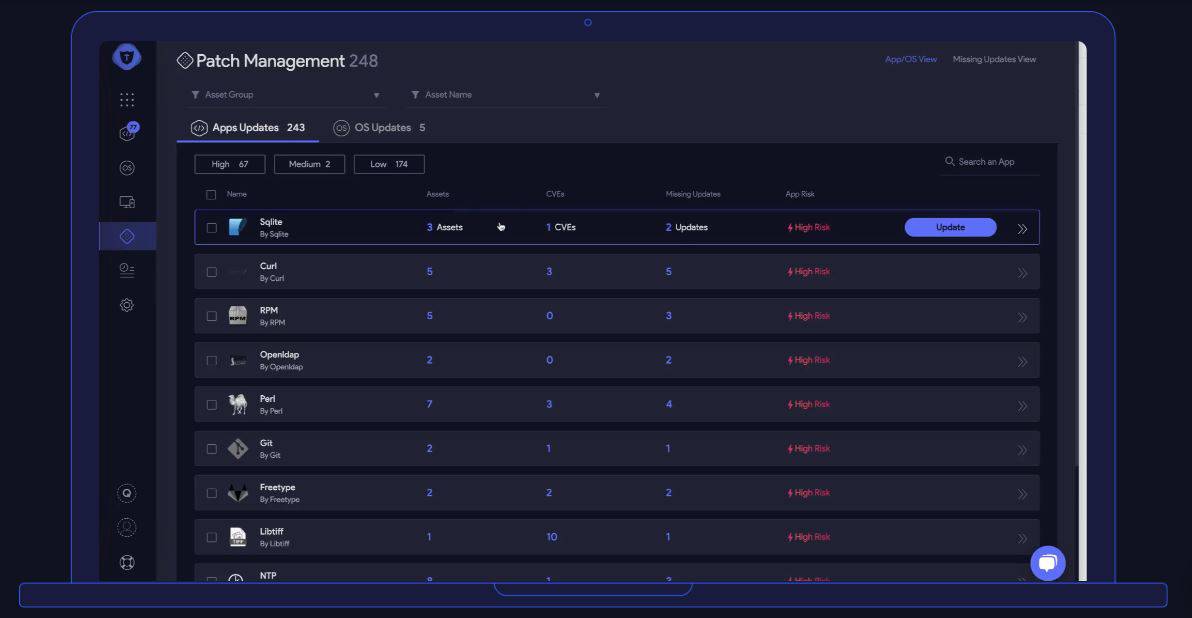
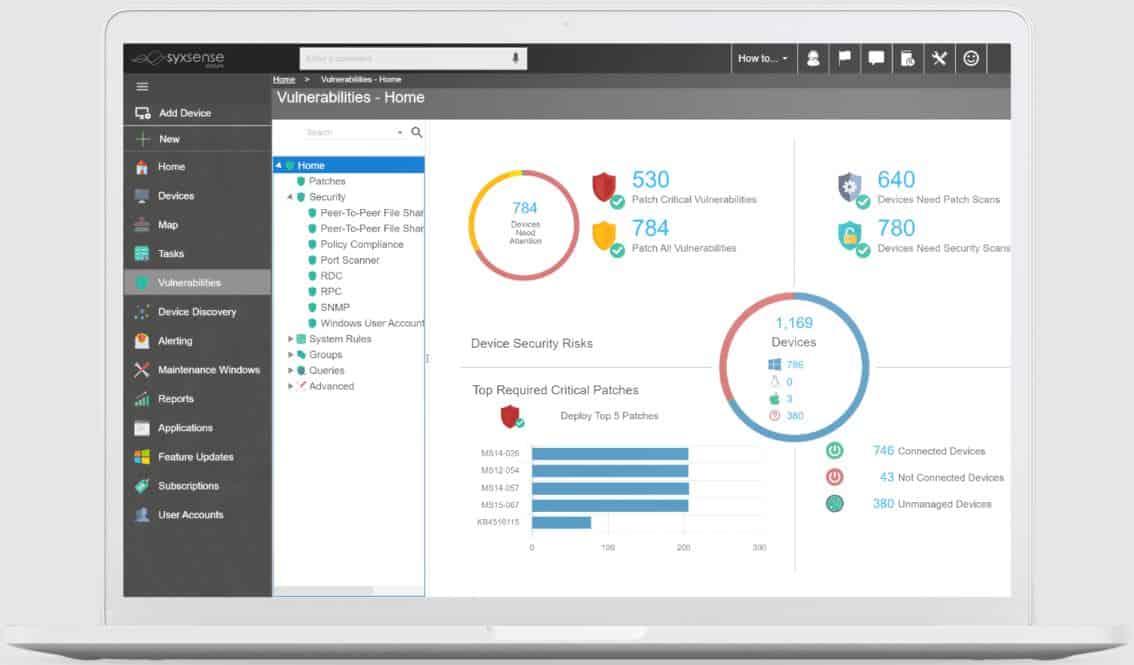

0 Commentaires